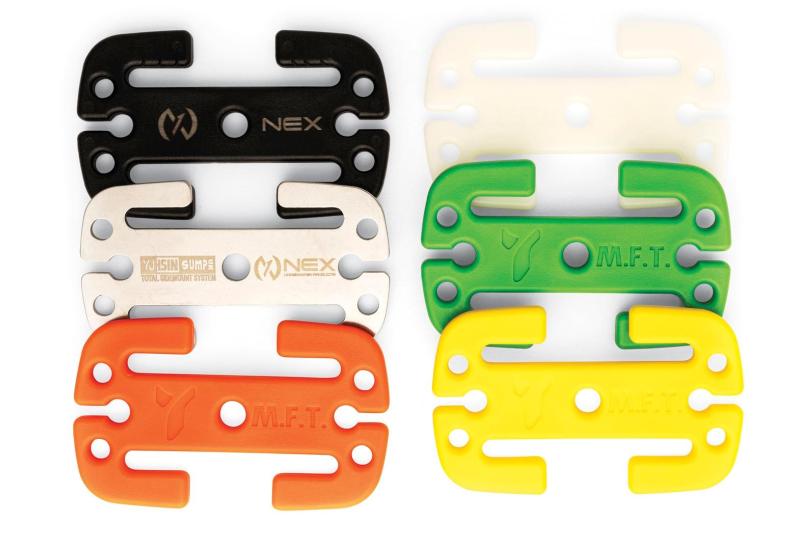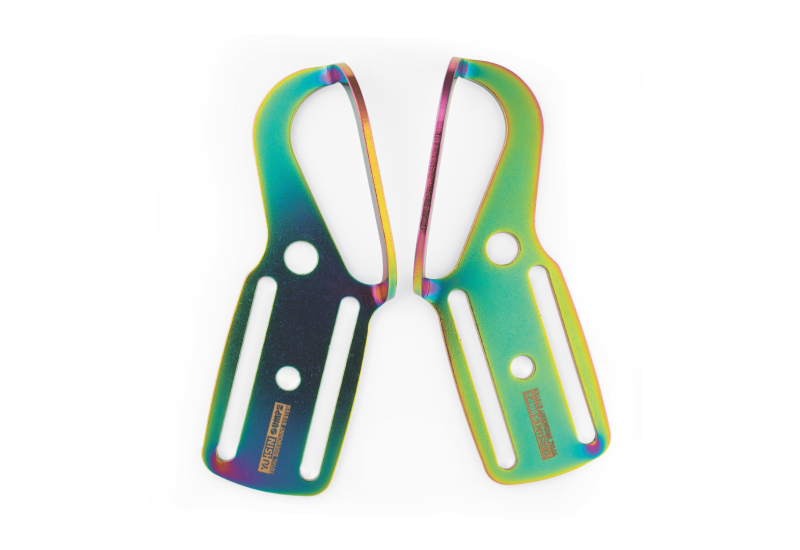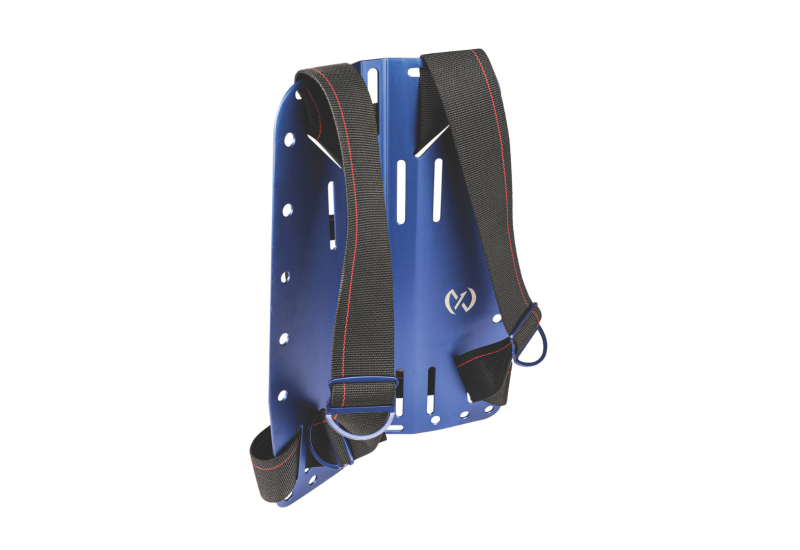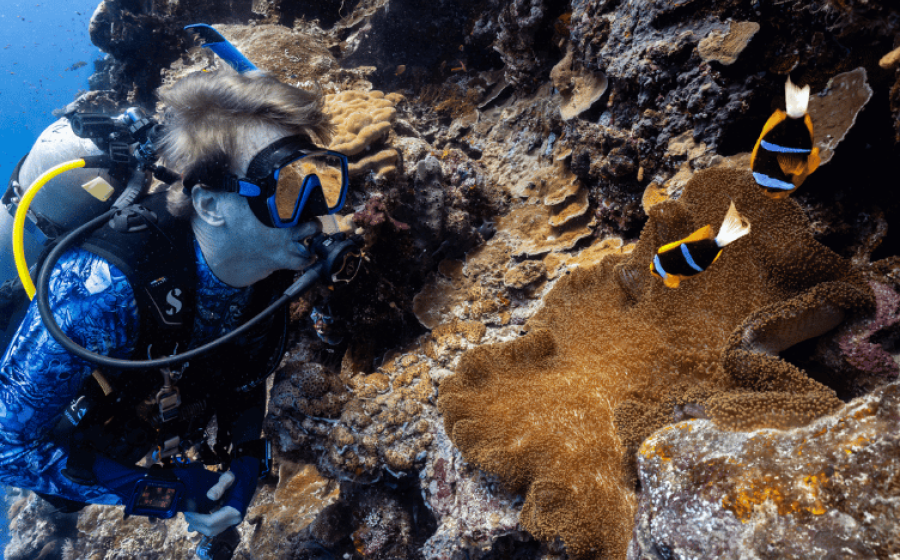2007 Scuba Lab Fin Test Protocols

Every Scuba Lab gear review has one common goal--helping you be an informed consumer of dive gear. If we've done our job, we've given you valuable information you can use to sort your equipment options and get the gear that's right for you. In the case of our fin reviews, we used a team of 12 test divers and five test supervisors to gather the data, comments and scores presented in the review. Our test divers are a representative sample of the diving population, two-thirds men and one-third women, made up of readers like you. Each morning, the test divers split into teams to gather the objective performance data on speed, thrust and maneuverability. Then, after a quick soak in the pool and a hot lunch, they loaded onto the dive boat and headed out to evaluate the ergonomic performance of fins on a series of two-tank reef dives. These test divers are your stand-ins, doing what you would do if you could do it--try out every new pair of fins on the market.
It's expensive, it's time-consuming, but it's worth it. By week's end, the team had invested 270 diver hours in morning speed, slalom and thrust tests and completed 170 afternoon ergo dives. In all, our divers generated more than 450 pages of speeds, times, scores and comments, demonstrating once again that nobody consistently collects as much data, on such a wide variety of fins, as Scuba Lab.
Here are the complete fin test protocols:
Objective Tests
SPEED
Using a flutter kick at an average depth of 10 feet, six test divers took each fin on two speed runs using specially designed underwater digital speedometers. The highest speed for each fin was taken from each diver, then averaged, to come up with the following chart data. Please keep in mind that in real-world diving, the difference of 1/10th mph is insignificant. Speed data is only part of a fin's overall performance. Scuba Lab recommends evaluating all areas of fin performance before making a buying decision. Note: In preparation for the 2007 Scuba Lab Fin Test, we invested in a new set of underwater speedometers with updated electronics. Calibration tests showed these new speedometers track fin speeds at a consistent half knot, or .58 mph, slower than the speedometers used in previous fin tests. When comparing speed performance of this year's fins with the speed performance of fins tested in past reviews, add .58 mph to this year's speeds to make them comparable.
THRUST TEST
To gather average thrust measurements, we used 12 test divers for each fin tested. Using a flutter kick at an average depth of 10 feet, test divers grabbed onto a rigid-handled harness that connected to a scale that connected to a pier piling. Holding the handle securely against their bodies, test divers slowly kicked forward, taking the slack out of the harness, then gradually increased their speed to their maximum effort. A test supervisor monitoring the scale recorded the maximum thrust (in pounds) generated by each diver. The data in the following chart represents the average of these measurements.
SLALOM COURSE
Six test divers, using a flutter kick, followed a zig-zag course laid out in the sand in approximately 10 feet of water. While on the course, divers' hands clutched either weight belts or BC straps to ensure all maneuvering power was generated by the fins. Divers swam two round-trip circuits per fin recording their course times with digital stopwatches. The fastest time for each fin was taken from each diver, then averaged, to come up with the following course times.
Ergonomic Tests
Using a 1 to 5 scale (5=excellent, 4=very good, 3=good, 2=fair, 1=poor) test divers evaluate each fin in 10 ergonomic points divided into three categories: "Most Important," "Moderately Important," and "Convenience Elements." They also provide written comments, which are included in the review.
Most Important
1) Power vs. Stress. The perception of power produced vs. effort required.
2) Stability. How much the fins wobble, slice from side to side, or hit each other during the kick cycle.
3) Maneuverability. The ease of turning, as well as getting in and out of tight places using fin power; i.e., backing up, changing or reversing directions, using small fin movements.
4) Acceleration. During an underwater swim, the ability to quickly pick up speed.
Moderately Important
5) Fit and Comfort. In and out of the water.
6) Alternate Kicks. Ease and effectiveness of frog, dolphin and sculling kicks.
7) Surface swim. Both face-down and while on the back.
Convenience Elements
8) Donning and Doffing. Prior to dive, after the dive, while on deck.
9) Adjusting for Fit. Ease of using buckles and straps, both in and out of the water.
10) Non-Skid. The sense of security on a wet boat deck geared up while wearing fins.

Every Scuba Lab gear review has one common goal--helping you be an informed consumer of dive gear. If we've done our job, we've given you valuable information you can use to sort your equipment options and get the gear that's right for you. In the case of our fin reviews, we used a team of 12 test divers and five test supervisors to gather the data, comments and scores presented in the review. Our test divers are a representative sample of the diving population, two-thirds men and one-third women, made up of readers like you. Each morning, the test divers split into teams to gather the objective performance data on speed, thrust and maneuverability. Then, after a quick soak in the pool and a hot lunch, they loaded onto the dive boat and headed out to evaluate the ergonomic performance of fins on a series of two-tank reef dives. These test divers are your stand-ins, doing what you would do if you could do it--try out every new pair of fins on the market.
It's expensive, it's time-consuming, but it's worth it. By week's end, the team had invested 270 diver hours in morning speed, slalom and thrust tests and completed 170 afternoon ergo dives. In all, our divers generated more than 450 pages of speeds, times, scores and comments, demonstrating once again that nobody consistently collects as much data, on such a wide variety of fins, as Scuba Lab.
Here are the complete fin test protocols:
Objective Tests
SPEED
Using a flutter kick at an average depth of 10 feet, six test divers took each fin on two speed runs using specially designed underwater digital speedometers. The highest speed for each fin was taken from each diver, then averaged, to come up with the following chart data. Please keep in mind that in real-world diving, the difference of 1/10th mph is insignificant. Speed data is only part of a fin's overall performance. Scuba Lab recommends evaluating all areas of fin performance before making a buying decision. Note: In preparation for the 2007 Scuba Lab Fin Test, we invested in a new set of underwater speedometers with updated electronics. Calibration tests showed these new speedometers track fin speeds at a consistent half knot, or .58 mph, slower than the speedometers used in previous fin tests. When comparing speed performance of this year's fins with the speed performance of fins tested in past reviews, add .58 mph to this year's speeds to make them comparable.
THRUST TEST
To gather average thrust measurements, we used 12 test divers for each fin tested. Using a flutter kick at an average depth of 10 feet, test divers grabbed onto a rigid-handled harness that connected to a scale that connected to a pier piling. Holding the handle securely against their bodies, test divers slowly kicked forward, taking the slack out of the harness, then gradually increased their speed to their maximum effort. A test supervisor monitoring the scale recorded the maximum thrust (in pounds) generated by each diver. The data in the following chart represents the average of these measurements.
SLALOM COURSE
Six test divers, using a flutter kick, followed a zig-zag course laid out in the sand in approximately 10 feet of water. While on the course, divers' hands clutched either weight belts or BC straps to ensure all maneuvering power was generated by the fins. Divers swam two round-trip circuits per fin recording their course times with digital stopwatches. The fastest time for each fin was taken from each diver, then averaged, to come up with the following course times.
Ergonomic Tests
Using a 1 to 5 scale (5=excellent, 4=very good, 3=good, 2=fair, 1=poor) test divers evaluate each fin in 10 ergonomic points divided into three categories: "Most Important," "Moderately Important," and "Convenience Elements." They also provide written comments, which are included in the review.
Most Important
1) Power vs. Stress. The perception of power produced vs. effort required.
2) Stability. How much the fins wobble, slice from side to side, or hit each other during the kick cycle.
3) Maneuverability. The ease of turning, as well as getting in and out of tight places using fin power; i.e., backing up, changing or reversing directions, using small fin movements.
4) Acceleration. During an underwater swim, the ability to quickly pick up speed.
Moderately Important
5) Fit and Comfort. In and out of the water.
6) Alternate Kicks. Ease and effectiveness of frog, dolphin and sculling kicks.
7) Surface swim. Both face-down and while on the back.
Convenience Elements
8) Donning and Doffing. Prior to dive, after the dive, while on deck.
9) Adjusting for Fit. Ease of using buckles and straps, both in and out of the water.
10) Non-Skid. The sense of security on a wet boat deck geared up while wearing fins.










